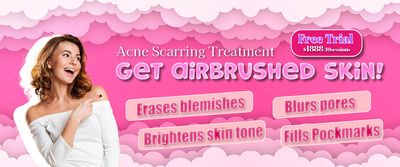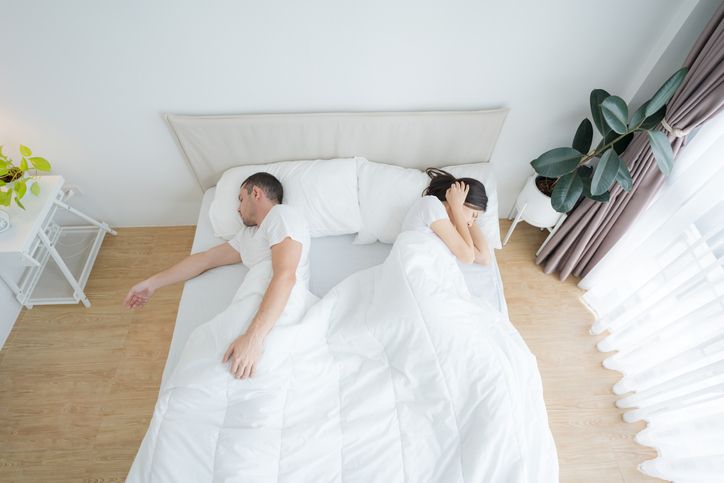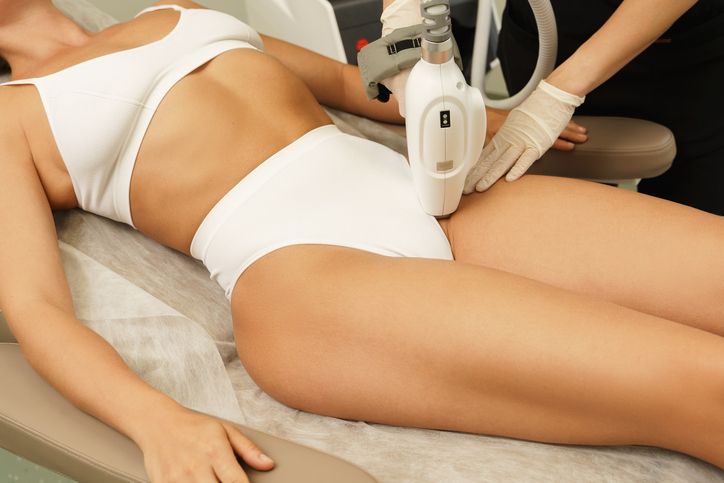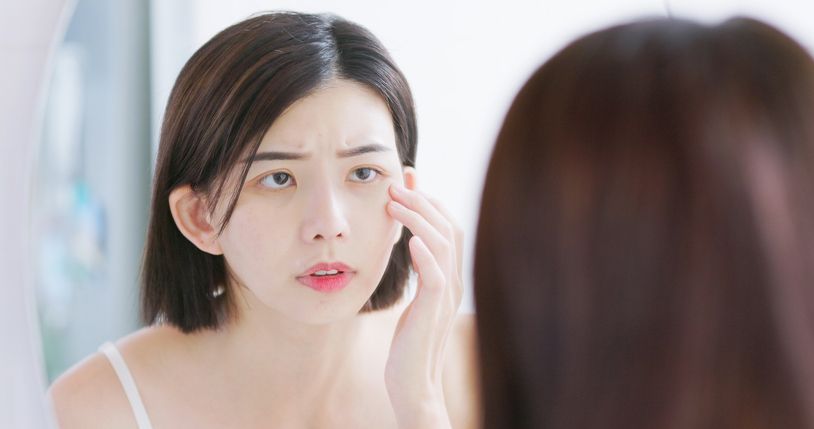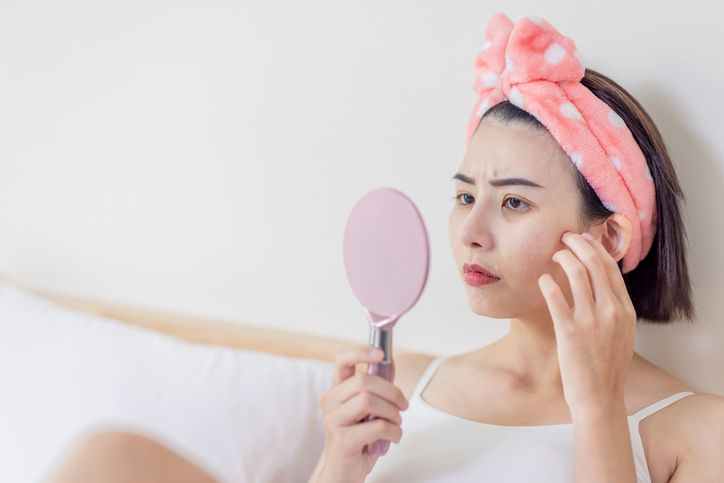- Home
- Trend
- Weight Loss Strategies
- Acne Tips
- Hair Health Information
- Blemish Removal Tips
- Acne Scar Removal Tips
- Muscle Building Techniques
- Intimate Care Tips
- Postpartum Intimate Care
- Eye Bags Wiki
- Tips for Face Slimming
- Secret of Permanent Hair Removal
- Breast Enlargement Tips
- Cure to Snoring
- Marionette Lines
- Skin-Tightening Secrets

免費體驗
Acne Scarring Treatment
1 Minute Self-Registration
Date should not be before minimal date
Dealing with acne scars can be a challenge, but modern dermatology offers a variety of solutions to help you regain smooth, radiant skin. One popular and effective option is the use of dermal fillers specifically designed to treat acne scars, but most of us don't really know how these fillers interact with severe scars.
1
Post Acne Breakouts: How Does Fillers for Acne Scars Work?
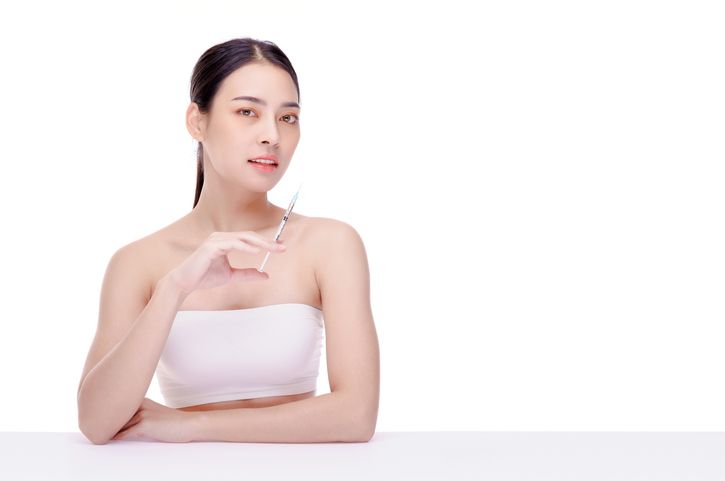
Acne scarring fillers, also often called dermal fillers, are a game-changer for those looking to address the aftermath of acne breakouts. These fillers work by plumping up the depressed areas of the skin, such as atrophic scars, boxcar scars, and rolling scars, as these scars often result in depressions or indentations in the skin. When a dermal filler is injected into these scarred areas, it adds volume, effectively lifting and plumping the depressed skin. This process reduces the visible depth of the scar, creating a smoother and more even skin surface.
In addition to filling depressions, dermal fillers can be employed to soften textural irregularities caused by scars. By injecting fillers into the scar tissue, the goal is to create a more uniform and even skin texture, improving the overall appearance of the scar. After it's completed, they can create a smoother surface and reduce the visibility of scars, ultimately boosting your confidence. Usually, they can be applied to areas such as:
1. Cheeks
Dermal fillers can be strategically placed in the cheeks to restore volume loss caused by acne scarring. This not only improves the overall contour of the face but also enhances a more youthful appearance.
2. Nose
Fillers can be used to smooth out irregularities and indentations caused by acne scars on the nose. This non-surgical option is particularly beneficial for those seeking to refine the nasal profile without resorting to invasive procedures.
3. Lips
Acne scars around the mouth can affect the natural fullness and definition of the lips. Dermal fillers can be injected into the lips to restore volume and create a smoother, more balanced lip contour.
4. Chin
Dermal fillers are effective in addressing depressed or uneven areas on the chin caused by acne scarring. By strategically injecting fillers, a more harmonious and balanced facial profile can be achieved.
5. Around the mouth
Acne scars often leave textural irregularities around the mouth. Fillers can be used to soften the appearance of these scars, providing a smoother and more even skin surface.
2
Who is Suitable For This Acne Scar Treatment?
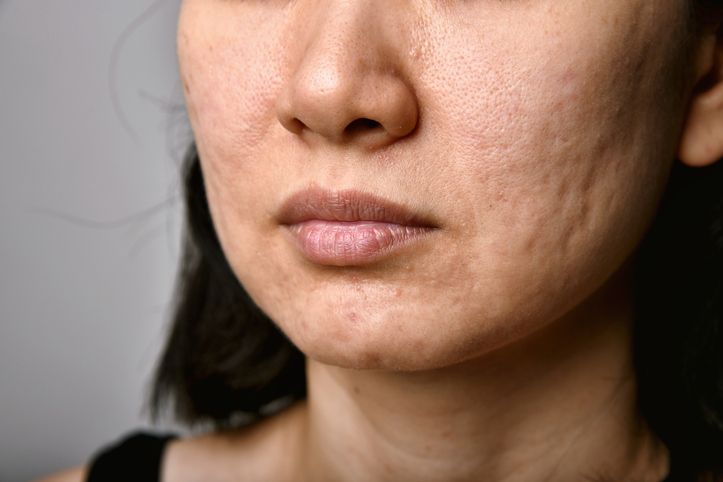
The decision to use acne scar fillers depends on the severity and type of acne scars a person has. Generally, acne scar fillers are suitable for addressing atrophic acne scars, which are characterised by a loss of tissue. Here's a breakdown of different levels of acne scars and how they might be treated with fillers:
Mild acne scarring
Superficial scars that may appear as discoloration or slight depressions. Consideration: You don't need dermal fillers. Topical treatments, chemical peels, or microdermabrasion may be sufficient.
Moderate acne scarring
More noticeable depressions or uneven texture, but not extremely deep. Consideration: Suitable for dermal fillers, particularly hyaluronic acid fillers, which can be effective in smoothing out moderate acne scars by adding volume to the depressed areas.
Severe acne scarring
Deep, well-defined scars that significantly affect the skin's texture and appearance. Consideration: For severe acne scars, a combination approach may be recommended. This could involve a series of dermal filler sessions, along with other treatments such as laser therapy or microneedling for optimal results.
It's important to note that the effectiveness of acne scar fillers can vary based on the individual's skin type, the specific characteristics of the scars, and other factors. In some cases, you may need a combination of different treatments to achieve the best outcome.
3
Want to Treat Acne Scarring with Dermal Fillers? Check if You Fulfil These Requirements
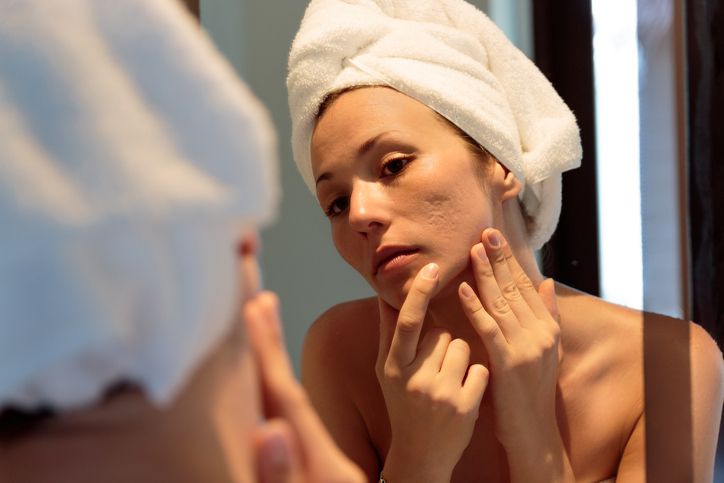
Dermal fillers for acne scarring are suitable for individuals who:
1. Have Acne Scarring
Of course, you should have noticeable acne scars that they wish to improve. Dermal fillers work best for atrophic scars, which are characterised by a loss of tissue.
2. Are in Good Health
You should generally be in good physical and mental health. This ensures a higher likelihood of successful treatment and reduces potential risks.
3. Have Realistic Expectations
It's crucial for you to have realistic expectations about the outcomes of the procedure. While dermal fillers can significantly improve the appearance of acne scars, they may not completely eliminate all imperfections.
4. Are Not Pregnant or Breastfeeding
As a precautionary measure, individuals who are pregnant or breastfeeding are typically advised to postpone dermal filler treatments.
5. Seek Non-Surgical Solutions
Dermal fillers are an excellent option for those who prefer non-surgical alternatives to address acne scarring, avoiding the downtime associated with more invasive procedures.
Before undergoing any cosmetic procedure, individuals should consult with a qualified healthcare professional to assess their suitability and discuss the most appropriate treatment plan based on their unique needs.
4
Types of Fillers on Market
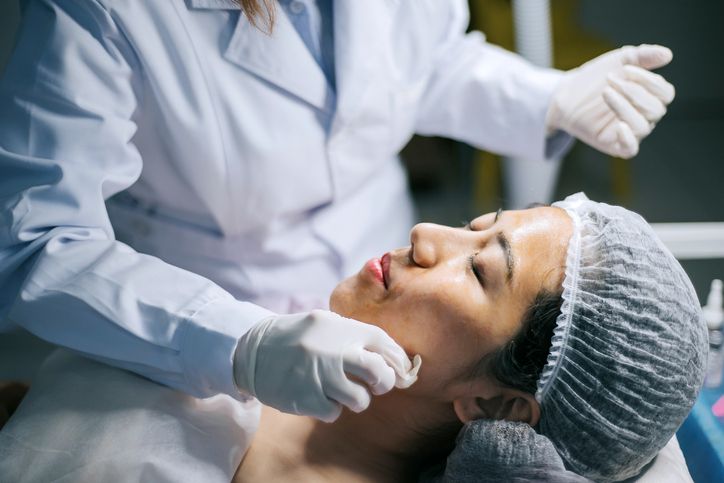
Hyaluronic Acid Fillers
Hyaluronic acid fillers, such as Restylane and Juvederm, are among the most widely used fillers for acne scar treatment. Hyaluronic acid is a naturally occurring substance in the skin that helps maintain hydration and volume. These fillers work by plumping up depressed acne scars, providing immediate results. The advantage of hyaluronic acid fillers lies in their versatility and reversibility, as their effects are temporary and can be adjusted if needed. They are particularly effective for addressing atrophic scars by adding volume and improving skin texture.
Poly-L-lactic Acid (Sculptra)
Sculptra is a filler that contains poly-L-lactic acid, a biocompatible and biodegradable substance. Unlike hyaluronic acid fillers, Sculptra doesn't provide immediate results. Instead, it stimulates collagen production over time, promoting natural tissue regeneration. This makes Sculptra an excellent option for individuals looking for a gradual improvement in acne scars and longer-lasting results. The collagen stimulation helps to restore the skin's structure and volume, contributing to a more sustained and natural-looking outcome.
Bellafill
Bellafill stands out as a unique option among acne scar fillers. It contains polymethyl methacrylate (PMMA) microspheres suspended in bovine collagen. What sets Bellafill apart is its status as the only FDA-approved permanent filler for acne scars. The microspheres provide a structural foundation, and over time, the collagen is absorbed, leaving a framework that supports natural collagen production. This permanent nature makes Bellafill a compelling choice for individuals seeking a long-term solution to their acne scars.
Autologous Fat Transfer
Autologous fat transfer involves using the patient's own fat, harvested from another part of the body through liposuction, as a filler for acne scars. This procedure offers a dual benefit of contouring areas with excess fat while simultaneously addressing acne scars. Autologous fat transfer provides a natural and long-lasting solution, as the transplanted fat integrates with the surrounding tissue. While the results can be more permanent, there may be a need for additional sessions to achieve the desired outcome, as some of the transplanted fat may be reabsorbed by the body.
In summary, the choice of filler depends on individual preferences, the type of acne scars, and desired treatment outcomes. Consulting with a qualified healthcare professional will help determine the most suitable filler and treatment plan tailored to the specific needs and goals of each patient.

免費體驗
Acne Scarring Treatment
1 Minute Self-Registration
Date should not be before minimal date
5
Is My Scars Considered Severe? Match the Correct Acne Scars Level Before Choosing Fillers
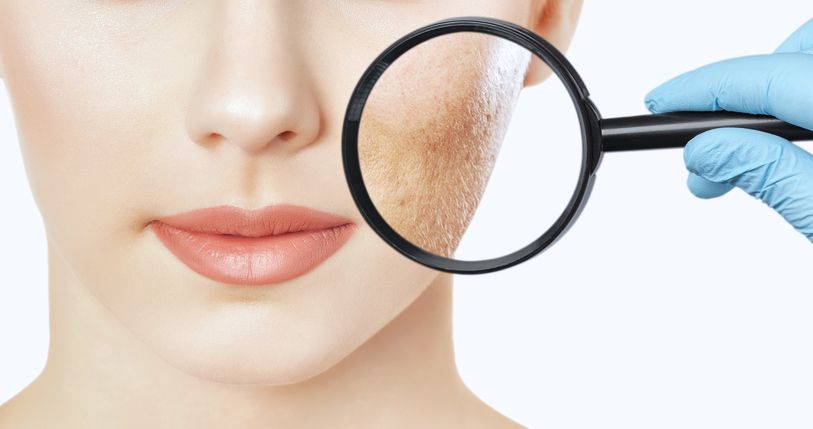
Determining the severity of acne scars can be subjective and may require a professional assessment by a dermatologist or skincare specialist. However, there are some general characteristics that may indicate the severity of acne scars, and you can use it as a general reference for your acne scar condition. Here are factors to consider:
Mild scars
Depth: Superficial scars that are typically subtle, often manifesting as discoloration or slight depressions on the skin. Type: Surface-level discoloration or mild rolling/boxcar scars. Area Coverage: Scars are isolated and cover a relatively small area. Texture and Appearance: Subtle changes that may not be immediately noticeable. Emotional Impact: Usually, these scars do not significantly impact one's self-esteem or emotional well-being.
Moderate scars
Depth: More noticeable depressions or uneven texture without being extremely deep. Type: More defined rolling or boxcar scars, and possibly icepick scars. Area Coverage: Scars are more widespread, covering a larger portion of the face or affected area. Texture and Appearance: Noticeable textural irregularities and uneven skin. Emotional Impact: Scars may cause some emotional distress but may not have a substantial impact on self-esteem.
Severe scars
Depth: Deep, well-defined scars that significantly affect the skin's texture and appearance. Type: Deep icepick scars, extensive rolling or boxcar scars, or a combination of different scar types. Area Coverage: Extensive scarring, potentially covering a significant portion of the face. Texture and Appearance: Pronounced and distinct textural changes, giving the skin a rough or pitted appearance. Emotional Impact: These scars often have a substantial impact on self-confidence and emotional health due to their visibility and pronounced texture.
If you are unsure about the severity of your acne scars, taking action earlier can stop your damaged skin from getting worse. Keep in mind that there are various effective treatments available, and early intervention can often yield better results.
6
Beyond Fillers: Other Acne Scar Treatments You Can Consider
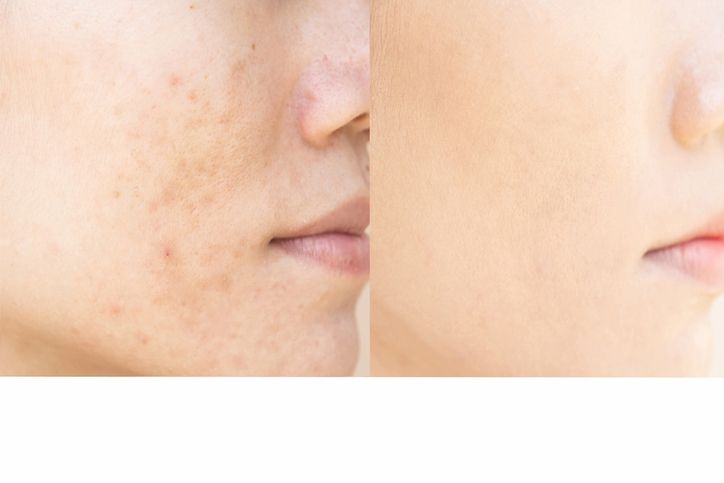
Dermal fillers are just one option among many for treating acne scars. No matter what kind of acne scars you have, Perfect Medical's Acne Scarring Treatment can be a great way to complement filler treatments.
This treatment employs advanced 1064nm laser technology, a highly effective approach that reaches deep into the skin tissue. This technology leverages photothermal action to break up excess melanin responsible for acne, facilitating the body's natural elimination process. Additionally, the laser energy stimulates the production of collagen and elastin, essential components for skin tissue repair.
This comprehensive treatment is designed to address various types of acne scars, including rolling scars, hypertrophic scars, raised scars, atrophic scars, boxcar acne scars, brown and red spots, ice-pick scars, and more. By combining cutting-edge laser technology, the procedure targets a wide range of acne-related skin imperfections!
Recognizing the challenges individuals face in dealing with acne-related issues, Perfect Medical's approach extends beyond laser treatment. The process involves a two-way spiral suction and draining technology, aimed at deep-cleansing and exfoliating the pores. This suction mechanism effectively removes oil, dirt, and dead skin cells from the pores, creating a clean foundation for subsequent steps.
Once the skin is thoroughly cleansed, Perfect Medical specialist also takes a holistic approach to skin health by injecting a medical-grade hydrating serum into the pores. This serum not only addresses the water-to-sebum ratio but also serves to boost collagen production. The combination of deep cleansing, exfoliation, and targeted serum application contributes to overall skin rejuvenation, promoting a healthier and more vibrant complexion.
In summary, Perfect Medical's Acne Scarring Treatment combines advanced laser technology to address the root causes of acne with a comprehensive pore-cleansing process. This two-fold approach aims to not only eliminate existing acne-related issues but also enhance skin health and appearance by promoting collagen production and maintaining optimal hydration levels.
7
Conclusion
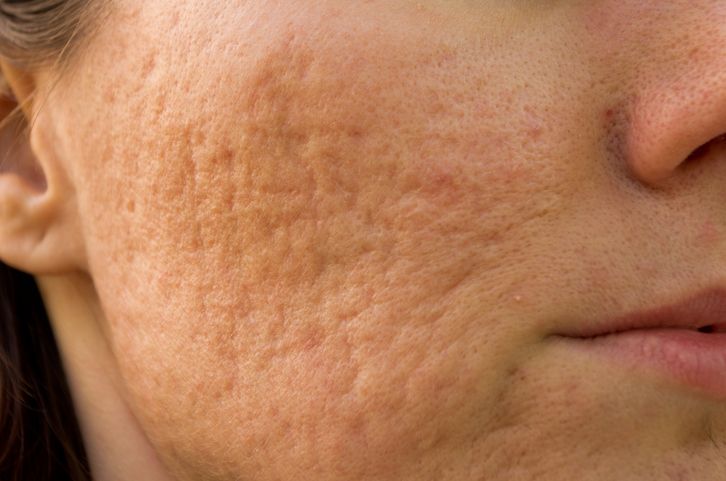
Addressing acne scars with fillers is a transformative journey towards smoother, more radiant skin. With options like hyaluronic acid, Sculptra, and Bellafill, individuals now have effective choices to treat various types of acne scars. But if you are one of the individuals that might not need a filler, you can consider other acne scarring treatment that fits your unique skin needs. After all, all you need is a goodbye to acne scars and hello to a more confident you!

免費體驗
Acne Scarring Treatment
1 Minute Self-Registration
Date should not be before minimal date
FAQ

1. Can soft tissue fillers effectively address distensible facial acne scars?
Soft tissue fillers, commonly made of materials like hyaluronic acid, are a popular and effective option for treating distensible facial acne scars. These fillers are injected beneath the skin's surface to add volume, lifting and smoothing out the depressions caused by acne scars. This process helps create a more even skin texture, reducing the visibility of the scars.
2. What is the recommended treatment procedure for addressing distensible facial acne scars?
Treating distensible facial acne scars often involves a comprehensive approach. The procedure typically begins with a thorough consultation to assess the scars and determine the most suitable treatment plan. Soft tissue fillers, such as hyaluronic acid fillers, are commonly used to add volume to the affected areas, effectively reducing the appearance of the scars. The treatment procedure is personalised based on the individual's unique skin characteristics and scar severity to achieve optimal results.
3. Can dermal filler injections be used to treat all kinds of facial acne scars?
Yes, dermal filler injections are versatile and can be employed to address a range of facial acne scars. The choice of filler and the number of injections depend on the individual's specific scar characteristics and treatment goals. During the consultation, the professional will carefully assess the scars and recommend a customised treatment plan to achieve the best possible outcome.
4. How many dermal filler injections are typically needed for treating chicken pox scars?
The number of dermal filler injections required for treating chicken pox scars varies based on factors such as the size, depth, and number of scars. In most cases, a personalised treatment plan will be developed during a consultation with a professional. The professional will consider the individual's skin condition, the severity of the scars, and the desired outcome to determine the optimal number of injections for effective and natural-looking results.
5. Are there specific considerations in the treatment procedure for chicken pox scars rated 1–2 in severity?
When treating mild to moderate chicken pox scars rated 1–2 in severity, the treatment procedure often involves dermal filler injections. The filler helps fill in depressions caused by the scars, improving overall skin texture. The procedure is tailored to the individual's needs, considering factors such as scar location, size, and the patient's desired outcome.
